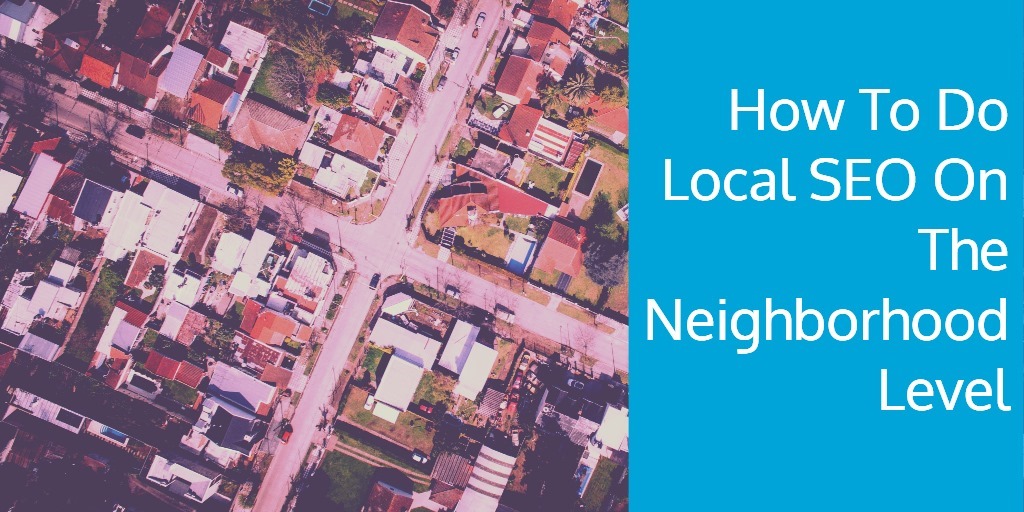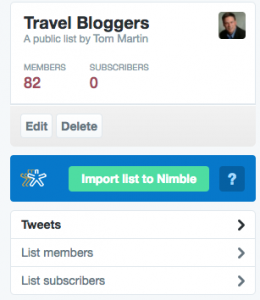
These days, when the results are being carefully tailored for each searcher, ranking locally is crucial for a local business to succeed and grow.
However, the road to success can be thorny, as local SEO is becoming more and more competitive nowadays and presupposes lots of little things to improve and to keep in mind. To nail it, a business has to offer something universal and yet unique enough to be discovered by consumers in a local neighborhood.
So, apart from all the conventional SEO enhancements, it’s a whole new layer of elaborate adjustments to apply, which may take a bit of thinking outside the box.
In this post let’s sum up all the crucial things to look after and some useful tips on how to optimize your business not just for a state or a city, but in a really local way.
Your Website
It all starts with a website, and your key priority in building it should be user-experience. You’ll probably put a lot of effort into bringing traffic to your site; respectively, you have to do your best to convert it (online or offline).
First, make sure the website has all it takes to get to know your company and to ease the decision making for your potential customers. Make the website totally reflect the image you’d like to convey about your business – lots of researches back up the fact people are much more willing to buy from a company they care about.
Second, make sure that the navigation is straightforward and intuitive, and your contact/location details are really easy to find.
Finally, make it load fast. Confusing navigation, outdated details and any page taking forever to load can have a repellent effect on your potential customers.
In times when mobile searches are surpassing desktop, and Google is starting mobile-first indexing, shifting the way it ranks results – it is also an absolute must to make your website mobile-friendly, so make sure you pass the test and have no obvious issues like too small tap targets, annoying pop-ups and significant difference between mobile and desktop content of pages.
The Tip:
A convenient thing to do (if applicable) is to add a store-locator to your contact page.

Your Key Business Info
Local search engines use your NAP (Name, Address and Phone trinity) to validate the existence and legitimacy of your business. Not only you should fill it out well initially – you should update it consistently: listing detected at false business address and mismatch NAP are in top 3 among negative rankings factors according to MOZ, so the information available to search engines should never be a mess.
Google My Business And Social Networks:
Start with filling out your Google My Business profile thoroughly, if it exists – make sure to claim it and make any necessary edits: check the contact info and revise all other details – any changes in working hours? A new payment method available? Nice!
Make sure the information aligns perfectly across all channels – including your website and all social networks, and make a habit of proactively keeping that information up-to-date; it really pays off!

Local Citations:
Submit your business to local business listings/directories/review sites highly relevant to your target area and neighborhood (or claim the existing listings). Same way, make sure your details are consistent across the whole local ecosystem, and check for duplicate listings – you definitely don’t want those.
Be ready to put some extra effort into using the full potential of the top local listing. The Expert Citation Survey from BrightLocal revealed 5 most important aspects in citations, aside from NAP:
- Website link
- Appropriate category
- Working hours
- Thorough description
- List of services
But you can also think over the details that would be the most applicable and useful for your specific business and your potential searchers: for some it may be a decisive factor if you accept credit cards or if your pizza-place is dog-friendly. Providing the details searchers are likely to seek will help you find your way to their screens.
Last, but not least: make sure to have eye-catchy and appealing photos (both from the inside and from immediate surroundings), as the places with unsightly photos are more likely to be scrolled by.
The Tip:
Run a local Keyword Difficulty check for your niche keywords with a tool like Rank Tracker to see which directories/listings are more likely to appear among the top results in your neighborhood, and focus on filling those up foremost.
Schema
Local schema markup allows you to do a whole range of things these days, with thousands of properties to indicate your working hours or price-range, to display your star rating or event schedule. It is being used by search engines to not only see the data on your website, but understand it, and return more digestible results. It can make your business stand out among the results with an informative rich snippet; and if you consider user behavior to be somewhat of a ranking factor – you can see how it may improve your click-through rate and thus make the search engines consider your website to be a nice fit, and promote it in perspective. Finally, this is extremely convenient for a searcher to see the whole picture.

The Tip:
Think of the most searched-for aspect and mark it up with schema: if you’re a venue – add the events schedule, if it’s a how-to guide – indicate the approximate amount of time it’ll take, if you are aiming at ‘near me’ searches – don’t forget to indicate operating hours.
Reviews
The one thing about local SEO that is not entirely under your control – is reviews; yet, it’s an absolute essential. Nice reviews work as a social proof for your business, as people tend to rely on those making the purchasing decisions (according to the recent survey conducted by BrightLocal – 84% of people trust online reviews as much as a personal recommendation). Apart from that, the number and diversity of reviews is considered to play a certain role in your rankings, too.
As I say not entirely – there is still a lot you can do about it. According to the same survey mentioned above – 7 out of 10 consumers will leave a review for a business if they’re asked to; so the first direction in which you should put your efforts is encouraging your customers to submit reviews (by just asking, by offering a treat or any other kind of incentive). However, keep in mind: while some review sites are fine with you steering your customers into their direction, some may consider that fraudulent, so make sure to check the policies of the sites, and adjust your tactics respectively.
It is as natural to receive a bad review once in a while, but the crucial thing here is to never ignore it. In fact, a wise solution would be to take a proactive approach to managing your reputation and to monitor what people are saying about you with a tool like Awario: it can collect all kinds of mentions across social networks, platforms and the Web; and you, in turn, can detect and handle any issue right away, and, possibly, prevent some by keeping an eye on the overall sentiment around your business.
Here’s a vivid proof of the importance of social media listening, a short story from Search Engine People about a bad review detected in time and managed the right way:

The Tip:
Apart from reputation management, social media listening may help you detect the influencers in your niche, and this can be a great opportunity for a collaboration of any kind.
Hyper-Local Markers & Content
At times, you may find yourself targeting an area that lacks a definite name or clear boundaries, or may have an informal name that its inhabitants are accustomed to. It may not be as effective to target the neighborhood by how it’s named on the map, if that’s not what locals type into Google. That’s where you bring the hyper-local SEO into play: a fine way to reach locals is to find such touch-points and, perhaps, enroll some local terminology into your content.
To be easily found, add the name of your hyper-local neighborhood to the end of your business name and to its description in Google My Business and other local listings, and optimize your local landing page with it: the URL, the title and H1-tags, image-ALTs and page content.
The Tip:
While optimizing hyper-locally, make sure Google Maps has your neighborhood defined correctly, or use the Google MapMaker to submit an edit. Update: Google closed down MapMaker at the end of March this year. To make any changes to a listing you should now click on “Suggest an edit” either in Maps or in the local Knowledge Panel. (Hat tip: Nick Rink from Smart Local UK)

This also involves understanding local values and lifestyle, and knowing the local holidays. For instance, you may know how in some countries people are throwing neighborhood carnivals – perhaps there’s a way to blend that into your marketing strategy or at least think of a holiday-spirit offer to your local community? A great cause to cover in your local blog, too!
Sharing local values and providing content really relevant to your local audience (be it a blog or a Twitter) can emphasize your company’s authenticity, as well as gain you additional traffic and visibility.
The Tip:
Sponsoring a local event can be a worthy move to get covered by local press, gain local backlinks and raise awareness of your business.
Near Me Searches
One more thing you shouldn’t neglect is ‘near me’ searches. And here’s why:

The searches are increasingly becoming mobile, and mobile search is more likely to be local in intent; it’s also quite natural for on-the-go searchers to look for a business of any kind, with the proximity to location being one of the main factors. Optimizing for such searches can especially be a win for multi-location businesses which have several stores or offices. The guidelines are pretty intuitive: you should make sure that you have separate landing pages optimized for each location, that the address and phone details for each are correct, prominent and are indicated in easy-to-index format. Don’t forget the operating hours!
Positive Google reviews are likely to have the impact on ranking well for ‘nearby’ searches. What’s more – even if your place is not the closest one to the searcher, good reviews may be your chance to appear on the searcher’s screen due to sorting by rating.

The Tip:
Ranking well for ‘near me’ queries can also be backed up with the backlinks to local landings, featuring searched location in anchor.
Additional Opportunities
The competition for ranking locally has been constantly growing ever since the Local Pack update, when the 7-pack has collapsed into a truly competitive 3-pack. While being listed in the cherished pack can be your number-one goal – it’s about time to expand the area of focus and think of other kinds of opportunities to increase your visibility and make your business shine bright.
For instance, video is one of the best formats for storytelling that can make people feel related to your company. The number of ways to incorporate it into your strategy is only limited by your imagination: you can add a ‘welcome’ video to your homepage, produce ‘how-to’ videos related to your niche, share company insights with your audience and do many other things – ranking among the Universal Search results or in Video tab can be a great bonus.
Same with images; and what’s more – it also can help you humanize the company if you create a nice Team page with photos, or provide a virtual tour to your manufacture to add credibility.

Bottom Line
Revising the aspects covered above, you can analyze and improve the way your website performs, manage the way your company is being perceived online and take a well-deserved place in the local ecosystem, especially if you are genuinely willing to contribute into the community and share local values. Just be attentive, be adventurous, and closely keep track of your progress to see what works best for your business.
* Adapted lead image: Public Domain, pixabay.com via getstencil.com
The post How To Do Local SEO On The Neighborhood Level appeared first on Search Engine People Blog.
(82)







